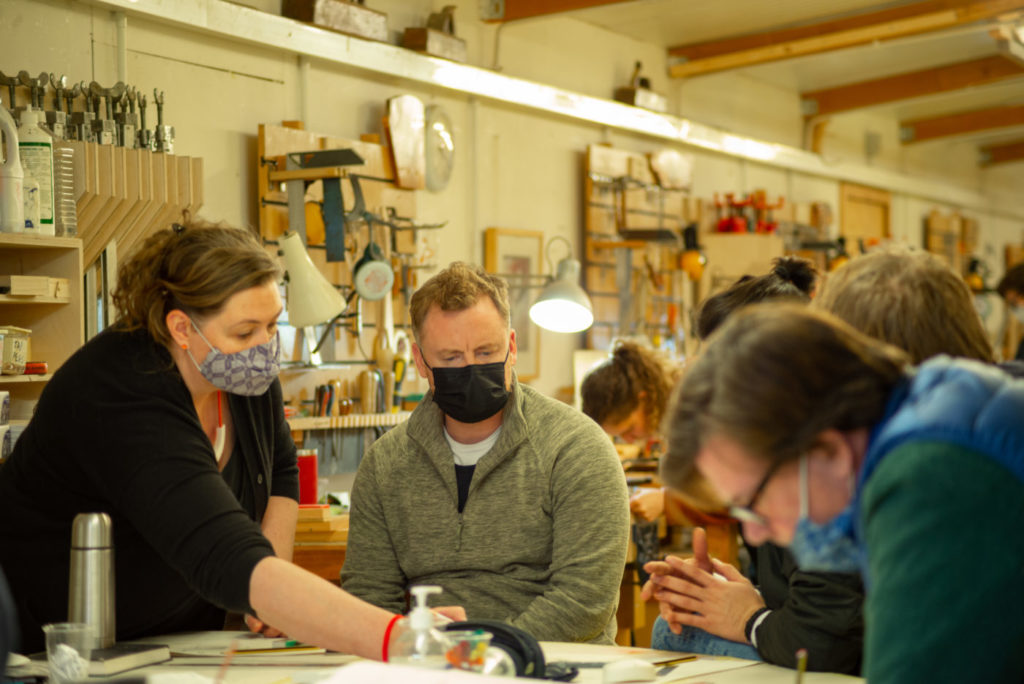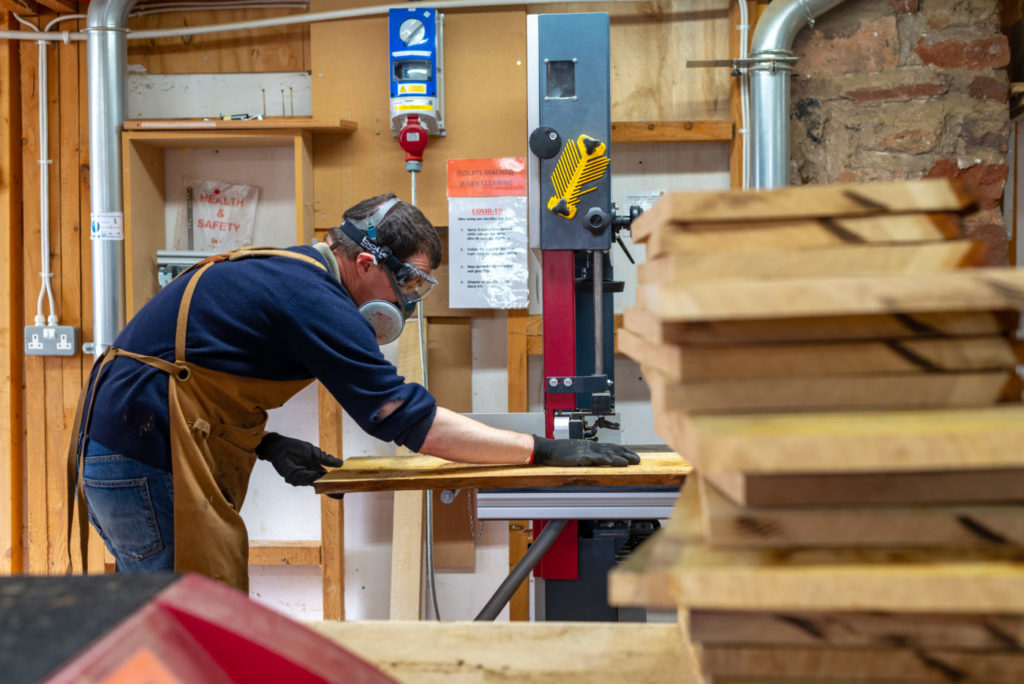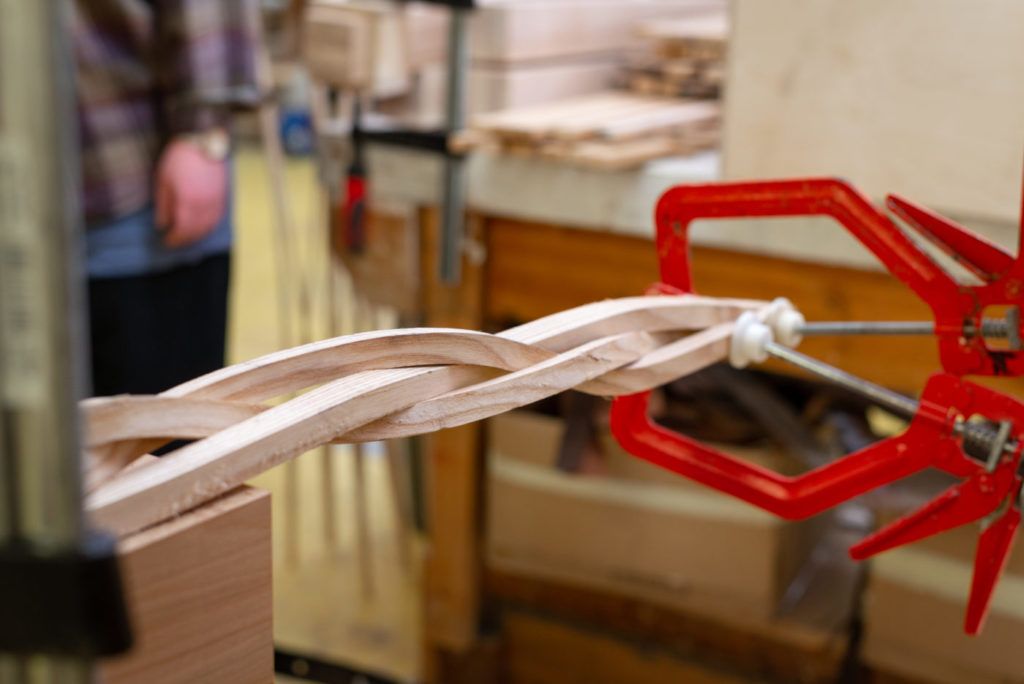It is easy to imagine that the woodworking industry (like many others today) could be ruled by machines in the not-so-distant future, but in fact, some handcrafting techniques simply cannot be replicated by tech. Then there is, of course, the joy that comes with knowing your handcrafted piece is a genuine one-off.
On the tech side of things, large projects and complex conceptual pieces can yield outstanding results with the help of CAD design software, laser woodcutters and more.
For these reasons, handcrafting and machine-led skills are both essential parts of learning the basic principles of woodworking at the Chippendale School.
In this blog, we explore some of the technical and handcraft elements that are fused to create stunning woodwork designs at the Chippendale School of Furniture…
The birth of a new design

At the initial design concept stage of woodworking, students learn how to use line drawings and perspective. Being able to draw furniture designs accurately and well is essential for furniture craftsmen as it gives you the knowledge you need to make the piece.
Drawing out the design also plays a key role in the decision-making process between you, the maker, and your client. By seeing and agreeing to the final furniture design, you know that the client will be thrilled with the result.
Students at the Chippendale School need to learn to draw furniture in different ways and so it is a key part of the professional furniture making course curriculum.
Matching the colours of antique furniture
Chippendale School is one of the few institutions that focus on furniture restorations to contribute to a circular economy.
A vital aspect of the furniture restoration process is colour matching. It involves layering up water-based dyes, starting with a yellow so that the wood does not become over pigmented to the point of no return.
To give an example, a really old antique look can be achieved with a garnet shellac polish. Once the polish is set, the correct wax must be chosen as this can still affect the shade of the colour.
It takes some knowledge of the wood and a keen eye to colour match effectively. A close-grained walnut is used to get the perfect colour match for a mahogany piece, whereas heartwood or sapwood are preferred in other cases. Read our full blog on colour matching for more tips.
Bringing 2D into 3D

For projects that require high levels of precision or speedy completion, a CNC machine is invaluable for creating technical designs, as the margin of error is very small. The machine is the automated control of tools such as drills, lathes, mills and 3D printers.
3D printers are our go-to when it comes to experimenting. At Chippendale, we use them to make a mini prototype of new designs and to help students test their concepts and put together models for clients.
Virtual reality has now made it onto the field of furniture-making as well. The Chippendale School has a set of goggles that allow students to view their digital designs in 3D. This means you can test out the functionality of your furniture before you even choose your first plank of wood.
Precision is accelerated

We are massively reducing waste at the Chippendale School thanks to AutoCAD. With woodworking, we only have one chance to get a piece right!
AutoCAD enables you to visualise your designs before making the first cut. All of the fine details of a project can be planned out in advance giving you space and the confidence to focus on creativity.
It is largely thanks to the combination of traditional handcrafting skills and technology that the students at the Chippendale School can consistently produce beautifully bold and innovative pieces of furniture that stand their ground in the growing world of furniture making.
We are currently accepting applications for our 2022/23 Professional Course – the route that enables you to become a qualified maker. If you are interested in this or any of our other courses, see more information here.